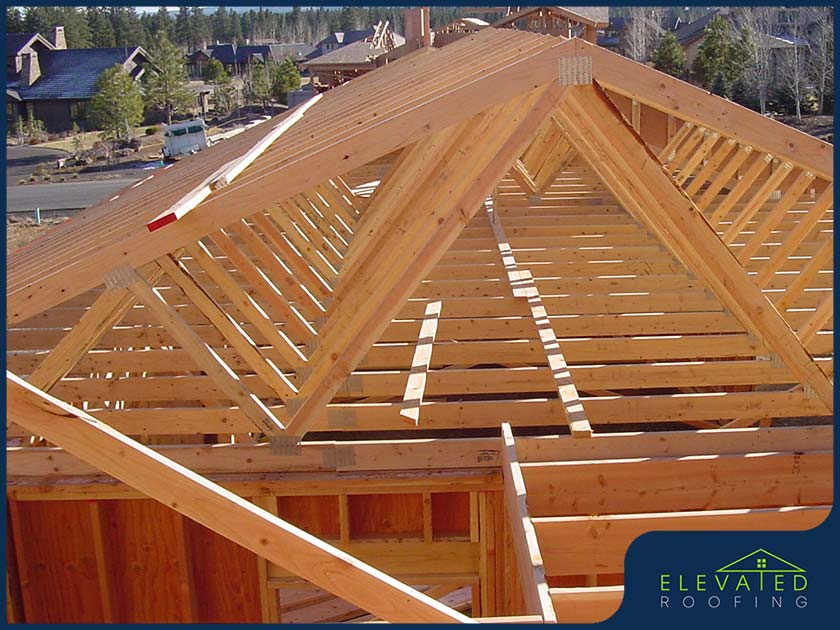The first step to keeping a sturdy and well-maintained roofing system is to learn more about its components. Take a look at the roof structure, for instance. It serves as the “skeleton” to the layer of “muscle” consisting of your roofing shingles, underlayment and flashing. Without the structure, there’s no way to hold up the weight of the system. And in most homes, the roof structure generally comes in two types–rafters and trusses. Elevated Roofing, the premier expert in storm damage restoration services, talks more about them here.
The Difference Between Rafters and Trusses
The rafters and trusses are sometimes used interchangeably, but they actually have some slight differences. The rafters, also known as ‘stick framing’, are elongated planks that slope down from a central ridge beam at the peak of the roofing system, overlapping with the exterior walls. They are usually done on-site. The trusses, on the other hand, are a prefabricated structure that forms a triangle-based webbing to support the roof. Unlike rafters, they are made in a factory and delivered to the work site ready to be installed.
So, Which One Is Better?
Both rafters and trusses come with their own unique advantages and drawbacks. Here are a few examples:
- Rafters. They can provide you with an expansive space to use as storage, while allowing for attic insulation that can work as a radiant barrier. If you’re planning to add a vaulted ceiling or cathedral-style ceiling in your home, the rafters will also accommodate this design choice. But because the building process is slower, getting your rafter ready will take more time. Another thing to consider–it might be costlier because its construction will require the expertise of skilled residential roofing contractors.
- Trusses. The measurement and fabrication of trusses are precise and done in a factory controlled environment. Trusses can be scheduled to arrive at the exact day of their installation, meaning they won’t require on-site storage and won’t be subject to possible weather exposure. They still have drawbacks, however. Trusses have a higher initial cost, and you won’t get to enjoy the benefits of a functional attic space. And if you’re planning some structural alterations in the future, it might cause issues with the truss system.
Whether you decide to choose rafters or trusses, it pays to work with a professional for their installation. In this area, that will be Elevated Roofing. We are the top results when you look up “trusted residential roofing contractors near me” online. With our trained and experienced crew, we’ll make sure your roof structure work is done right the first time. We proudly serve the areas in and around Birmingham and Springville, AL. Call us today at (205) 537-9754 or fill out this contact form to schedule your consultation.

